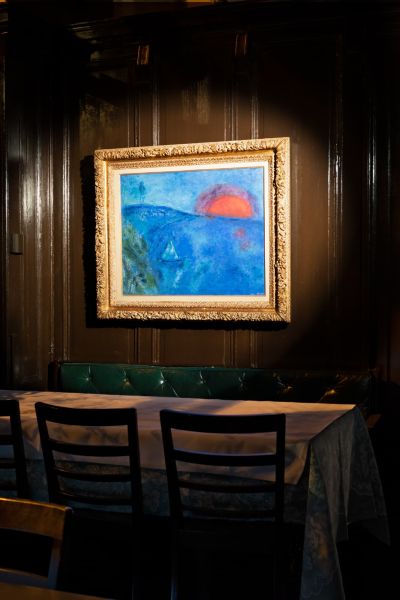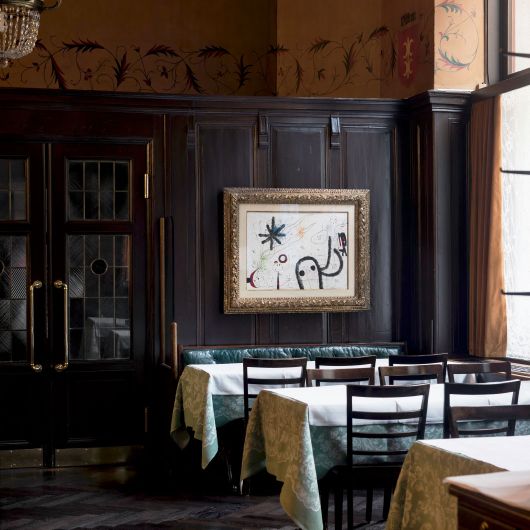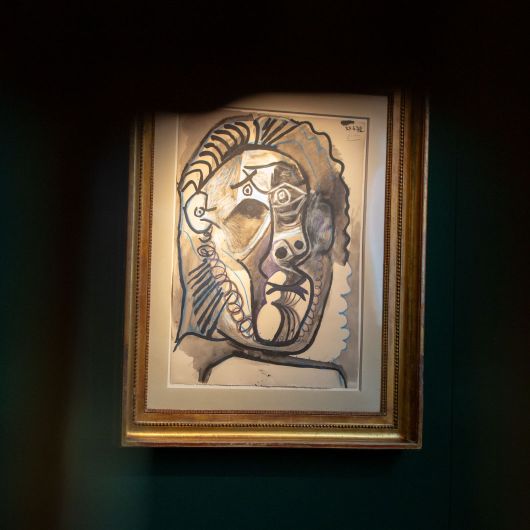The Art of the Kronenhalle
The former patron Gustav Zumsteg lived and breathed art. As a passionate mediator and lender, he sent his own paintings to international exhibitions for decades. With his keen sense of style, he began hanging works from his art collection in the Kronenhalle’s brasserie and dining rooms as early as the 1940s. To this day, you can dine beneath a village scene by Marc Chagall, gaze upon suns and moons by Joan Miró, encounter the southern light of Pierre Bonnard, or marvel at the dynamic skies of Georges Braque.
Form and color

The backbone of the Kronenhalle’s art collection lies in French modernism. As a textile designer, Gustav Zumsteg became part of a vibrant creative scene in Paris as early as the 1940s. Through connections with the gallerist and friend Aimé Maeght and in collaboration with designer and artist Christian Bérard, he engaged with numerous artists of his time. His passion for art was sparked by a sensual appreciation of color and form. Swiss artists whose figurative work was influenced by French styles joined the collection in Zurich, with later acquisitions also embracing Pop Art.
“Ceci n’est pas un musée”
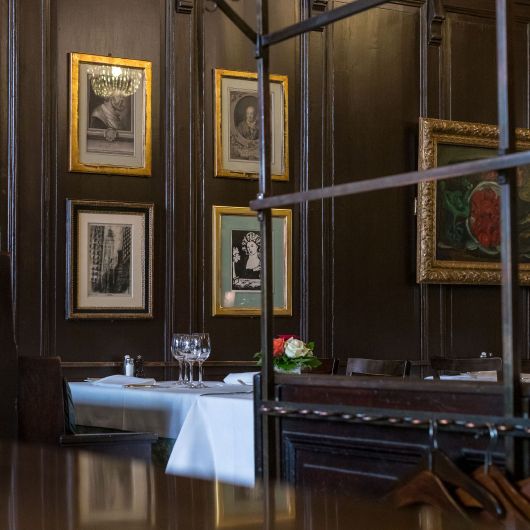
“This is not a museum,” declared French writer and politician André Malraux in 1964 at the opening of the Fondation Maeght in Saint-Paul-de-Vence. The institution saw itself as a place of encounter and inspiration—a space of freedom, as art so perfectly embodies. Gustav Zumsteg, who served on the board of this southern French foundation, found affirmation in this ideal for his own gastronomic establishment: under the light of art, everyday encounters and culinary traditions gain unparalleled value.
Artists, Friends, Guests
Not all artworks in the Kronenhalle claim the same artistic status. Among oil paintings of museum quality are souvenirs from artists. Over the years, unique gifts have joined Gustav Zumsteg’s personal collection: many artists, including Marc Chagall, Joan Miró, and Jean Tinguely, presented Hulda Zumsteg with artwork as birthday greetings or expressed their gratitude through collages for unforgettable experiences at the Kronenhalle.
Every Painting Has Its Place
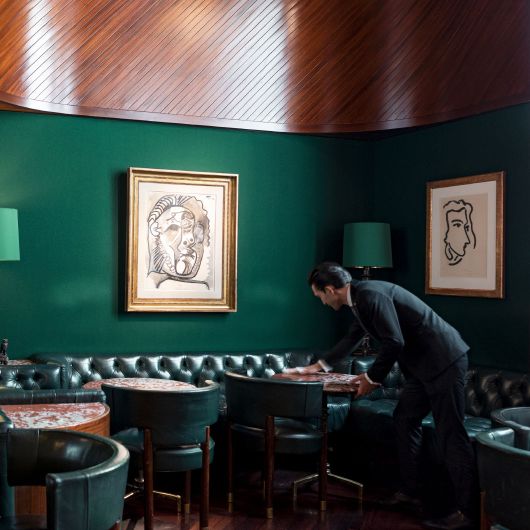
As long as the Kronenhalle, with its restaurant and bar, exists, no painting may be removed from its place. This was stipulated by Gustav Zumsteg in his will and continues to be respected: on the bronze owl-adorned lamp bases by Diego Giacometti in the bar, in the Swiss gallery where summer breezes stir cherry trees behind the counter, and in Varlin’s portrait in the brasserie, where Hulda Zumsteg perpetually watches over the staff and “her” guests.



